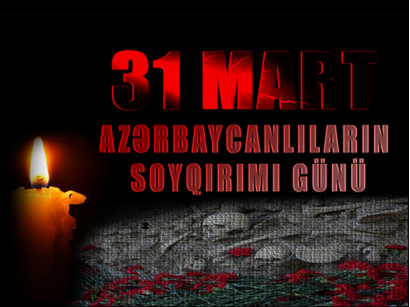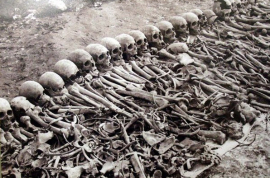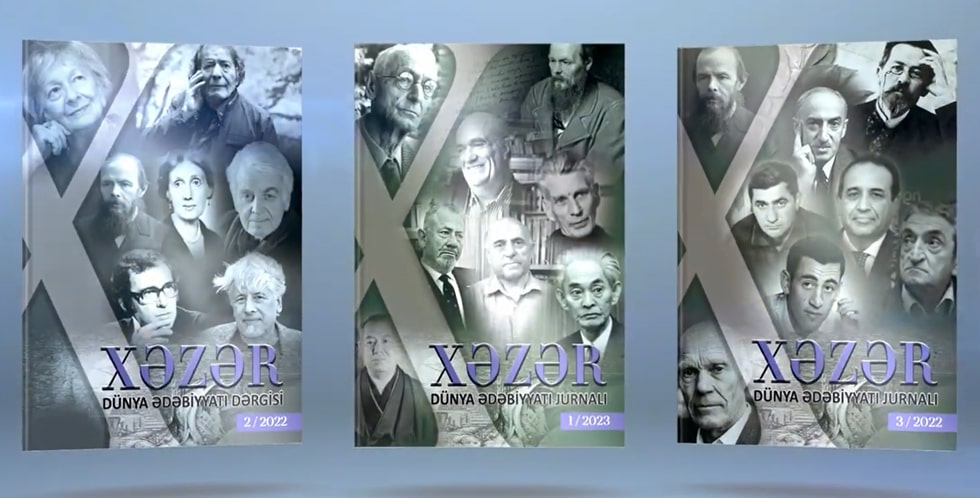March massacre in Azerbaijan (massacre of Muslims in 1918-20 in Baku and other cities)

Dr. Samad Sardarinia
Historian, Iran
Armenian nationalists, conjointly with the forces of Russian imperialism, periodically committed horrific massacres of Azerbaijanis. These tragic events are the bloody pages of our history. A great deal of weighty op-ed pieces, books have been written on this topic by our historians. The purpose of their works is to dispel a myth about the so-called "long-suffering Armenians" the world community.
As a result, objective scientific and research works by foreign scholars about these tragic events come out. One of such studies is the book "Garabagh in the passage of time" by Dr. Samad Sardarinia, a famous Iranian historian. The author in this work, based on reliable sources, has sought to highlight the history of Karabakh from a truth and justice perspective.
Below is one of the chapters in this book.
***
The revolution in October and February 1917 in Russia put an end to the era of czarism. The Russian Empire, known as the prison of peoples, collapsed and the peoples, including Azerbaijanis, living on the other side of the Araz river, got a chance to be rid of a century of oppression. However, further developments showed that Russian revolutionaries also treated these nations with inequality. Since they continued czarism's policy of distrust against Azerbaijanis and of alliance against Armenians. Armenian historian Grant Pasdchamasyan writes about the bitter truth: "The czarist government fell as a result of the revolution in February 1917. One of the main reasons that resulted in the revolution was that Russia sowed discord between nations. After the February Revolution the Provisional Government in St-Petersburg, formed by Lvov, Miliukov, Kerensky, openly expressed their interest in the Armenian issue. The government agreed to grant the right of self-determination in the cases of Finland, Poland and Armenia. The February Revolution empowered the Ottoman Armenians repatriated from Turkey to establish their own government."
Azerbaijanis, who lived on the other side of the Aras river, under the dictatorship of the Romanov for a century, began fighting for independence, and finally, in 1918, gained national independence. The Democratic Republic of Azerbaijan founded on May 28, 1918 went down in history as the 'First Republic'. Jeyhun Hajibeyov wrote: "The Declaration of Independence was the logical outcome of events. When the Russian Empire collapsed Azerbaijanis did not have the same rights as others. However, they managed to preserve religion, traditions and language."
The democratic republics of Georgia and Armenia were established followed by the Democratic Republic of Azerbaijan. (Notably, the democratic republic of Armenia emerged in Chukhursad, one of the four provinces of Azerbaijan. Before the treaties of Gulistan (1813) and Turkmenchay (1828) these territories belonged to Azerbaijan).
In 1918, when Russian troops left the Caucasus together with Dashnaks attacked Yerevan and 211 villages around it, killing around 300 thousand of Muslims. So they founded the Republic of Armenia over their bodies. On the other hand, they were not satisfied with what they got in cold blood, therefore, took advantage of the crisis and the unstable situation that stemmed from the Russian revolution and civil war, and finally succeeded in overthrowing the first Parliamentary Republic of the Azerbaijani people in 1920.
While Azerbaijanis fought for independence, the Armenians resorted to all sorts of tricks to attack on Azerbaijan. Thus, on 31 March 1918, two years before Azerbaijan had declared independence, Armenians attacked the unarmed population of Azerbaijan, committing terrible crimes against unarmed civilians, shooting and killing thousands of Muslims.
Mansour Gurgani writes that 'on March 30, 1918, Armenians together with Bolsheviks blocked the way to a group od Muslims leaving for Lankaran and provoked collision.
In 1918, in addition to Baku, Armenians massacred local people in Shamakhi, Guba, Zangezur, Nakhchivan, Lenkaran, and other places. Hundreds of thousands of Muslims were shot and killed, with towns and villages burnt and historical monuments destroyed.
Gallery
AND OTHER...
-
 Book “Fuzuli’s Creativity” by Mir Jalal Out in Jordan
Book “Fuzuli’s Creativity” by Mir Jalal Out in Jordan
The book “Fuzuli’s Creativity” by the famous Azerbaijani writer and literary scholar Mir Jalal, which tells about the works of the brilliant Azerbaijani poet...
-
 Yusif Vazir Chamanzaminli’s Creativity in the Israeli Literary Magazine
Yusif Vazir Chamanzaminli’s Creativity in the Israeli Literary Magazine
“Artikl”, the popular Israeli literary magazine, has posted in Russian an excerpt from the novel “In the Crossfire” by Yusif Vazir Chamanzaminli, the outstanding...
-
 Book “Flower Garden” by Musa Yaqub for Children Out
Book “Flower Garden” by Musa Yaqub for Children Out
ADTM Translation Agency has published the book Flower Garden, a collection of poems designed for school-aged children, written by the People’s Poet of Azerbaijan...












